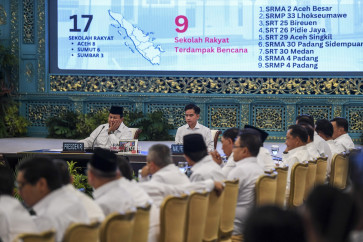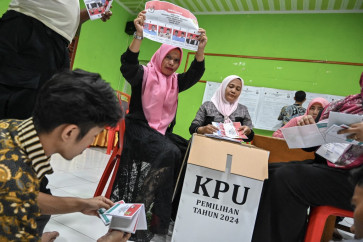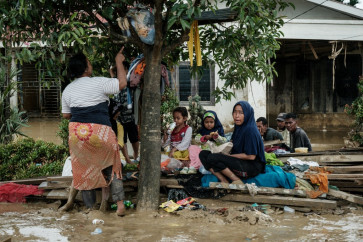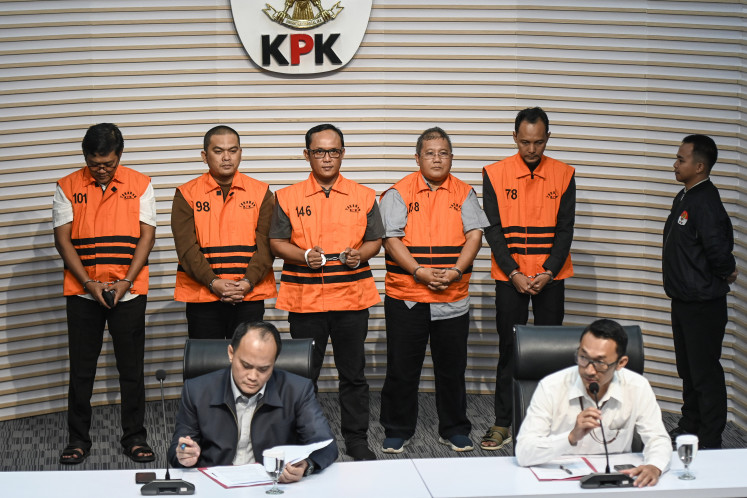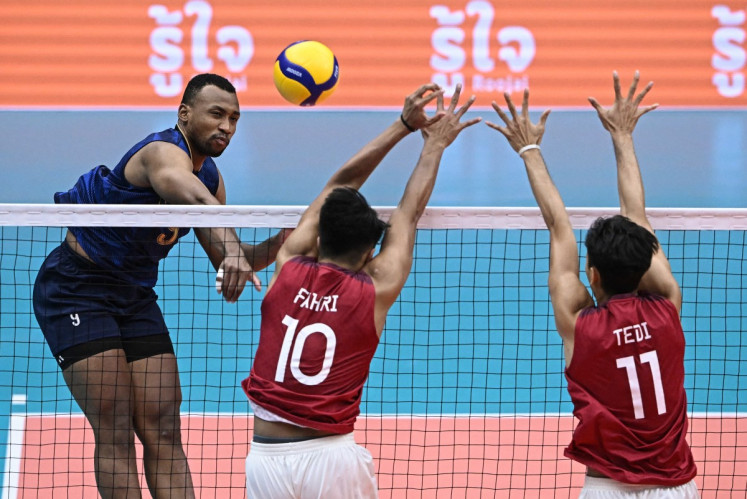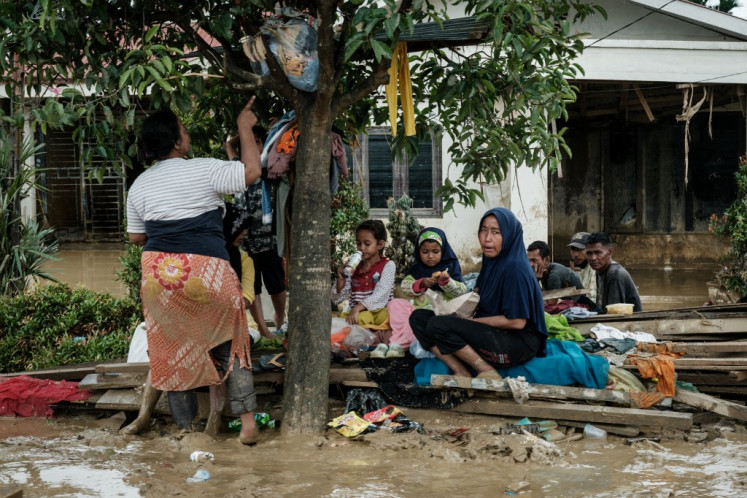Popular Reads
Top Results
Can't find what you're looking for?
View all search resultsPopular Reads
Top Results
Can't find what you're looking for?
View all search resultsBeyond ceasefire, ASEAN must anchor peace between Thailand and Cambodia
A public endorsement of the ceasefire by both monarchs of Cambodia and Thailand would signal to the public that peace is a sacred national objective, not just a temporary political maneuver.
Change text size
Gift Premium Articles
to Anyone
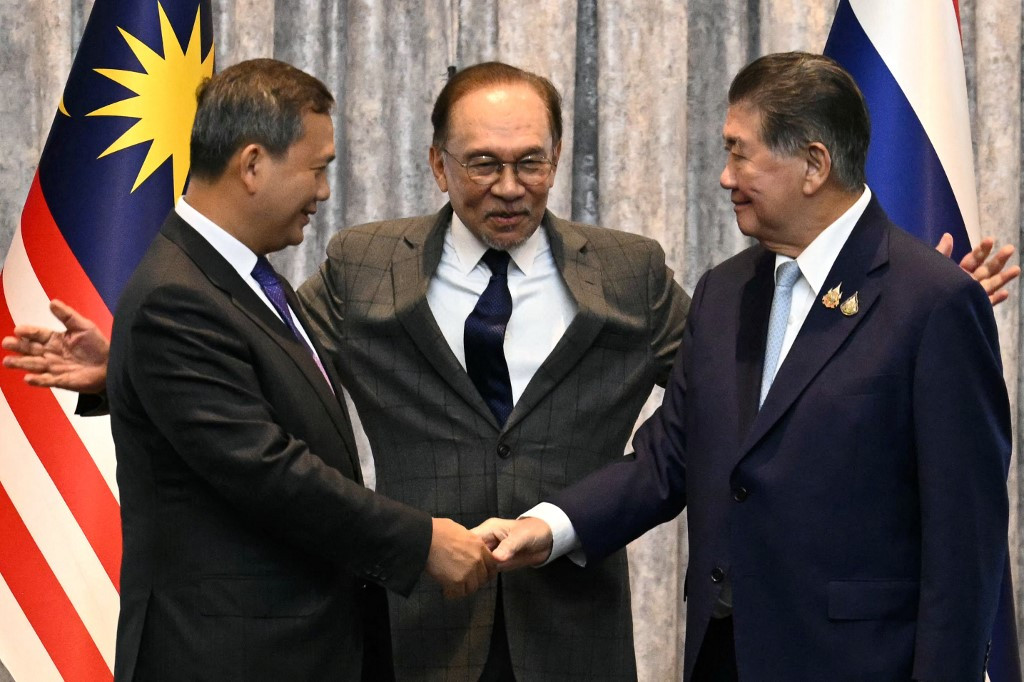 Cambodia's Prime Minister Hun Manet (left) and Thailand's acting Prime Minister Phumtham Wechayachai (right) shake hands on July 28 as Malaysia's Prime Minister Anwar Ibrahim puts his arms around them following a press conference after talks on a possible ceasefire between Thailand and Cambodia in Putrajaya. (AFP/Mohd Rasfan)
Cambodia's Prime Minister Hun Manet (left) and Thailand's acting Prime Minister Phumtham Wechayachai (right) shake hands on July 28 as Malaysia's Prime Minister Anwar Ibrahim puts his arms around them following a press conference after talks on a possible ceasefire between Thailand and Cambodia in Putrajaya. (AFP/Mohd Rasfan)
T
he ceasefire between Thailand and Cambodia, signed in Putrajaya on July 28, has been widely praised as a diplomatic triumph. Brokered by Malaysia, the 2025 ASEAN chair, and supported by strategic partners like China, Japan and the United States, this agreement offers a rare chance to de-escalate one of Southeast Asia's most sensitive conflicts.
Despite this progress, the accord's foundation is fragile. The General Border Committee (GBC), meeting in Kuala Lumpur from Aug. 4 to Aug. 7, must address the deep-seated issues that have plagued the border for over a century.
The recent conflict from July 24 to 28 saw fighting at 12 flashpoints along the 817-kilometer border. The clash displaced almost 300,000 people, destroyed homes and farms and collapsed infrastructure. While the ceasefire stopped the violence, it did not resolve the underlying suspicion and territorial disputes.
A central problem is the lack of a clear verification protocol. The agreement requires forces to withdraw and reinforcements to stop, but it does not specify who will monitor this or who has the authority to intervene if the rules are broken. Without a neutral, trusted and well-resourced third party on the ground, the ceasefire could easily fail.
Current monitors from Malaysia, China, Japan and the US are present, but their coverage is limited given the vast and complex terrain. ASEAN needs to step up. Member states like Indonesia and Singapore, with advanced satellite and surveillance capabilities, must play a larger role. If regional peace is a shared goal, then the tools to maintain it must also be shared.
Beyond verification, both Cambodia and Thailand need to agree to a full freeze on all troop movements. Any strategic repositioning or quiet fortification could destroy the trust built in Putrajaya. Transparency about deployment locations, troop strength and operational plans is essential. However, neither side has yet granted monitors access to this crucial information.
A more dangerous silence in the agreement concerns the role of the media. In both nations, state-aligned or nationalist media have used emotional and inflammatory language, often blaming the "other" side for land grabs and historical injustices. Without a commitment from both governments to curb these hypernationalist narratives, public opinion could undermine the peace process.
Furthermore, how the land vacated during the ceasefire is handled is another potential flashpoint. If these areas are reoccupied, booby-trapped or mined by either troops or militias, the fragile trust will be quickly replaced by confrontation. The GBC must set clear rules for how these lands will be secured and returned to civilian use.
Malaysia, as the host and current ASEAN chair, has been a key facilitator. However, the burden is unsustainable if left to one nation. Without full access to military doctrines, maps and rules of engagement from both sides, Malaysia’s armed forces risk becoming unintentional participants in the conflict they are trying to de-escalate. Genuine trust requires reciprocal transparency.
Indonesia must play a pivotal role. As ASEAN’s largest member with extensive experience in conflict prevention and settlement, Indonesia offers institutional credibility and diplomatic depth. It can act as both mediator and monitor, using its tradition of "Track 1.5 diplomacy" and the capabilities of its armed forces (TNI) to push for shared satellite intelligence and coordinated demilitarized zones.
Symbolic authority is also critical. In both countries, the monarchy holds immense historical legitimacy. A public endorsement of the ceasefire by both monarchs, alongside political and military leaders, would signal to the public that peace is a sacred national objective, not just a temporary political maneuver.
The risk of organized crime and arms trafficking also cannot be ignored. Illicit weapons markets often thrive during periods of stalemate. ASEAN's intelligence agencies must work together to disrupt these networks before they can fuel a future phase of the conflict.
For ASEAN, this ceasefire is a test of its credibility. The current chair, Malaysia, along with its predecessor, Laos, and its successor, the Philippines, must work in concert to ensure this agreement does not fail. Thailand, which will chair ASEAN in 2028, must also demonstrate its capacity to resolve long-standing disputes responsibly.
Beyond diplomacy, economic leverage can sustain peace. US President Donald Trump has stated that countries failing to uphold ceasefire commitments will be excluded from trade talks with the US. ASEAN should take a similar stance, withholding the benefits of the ASEAN Free Trade Area from those who violate regional norms. Peace should be rewarded, and conflict should have consequences.
The Putrajaya ceasefire was a crucial first step, but it is not the final one. The GBC's meetings must produce a detailed roadmap, not just a review. This roadmap must define compliance mechanisms, clarify the role of monitors, assign responsibilities for humanitarian work and establish real-time reporting protocols.
Indonesia and its ASEAN partners should act as "the eye in the sky," Malaysia should continue as the anchor and both Thailand and Cambodia must move from ceasefire to reconciliation, for the good of their people and for the credibility of ASEAN itself.
Peace is not a slogan, it is a structured system of cooperation that must be tested, verified and earned.
***
The writer is a professor of ASEAN Studies at International Islamic University of Malaysia and director of the Institute of Internationalization and ASEAN Studies (IINTAS). The views expressed are personal.


